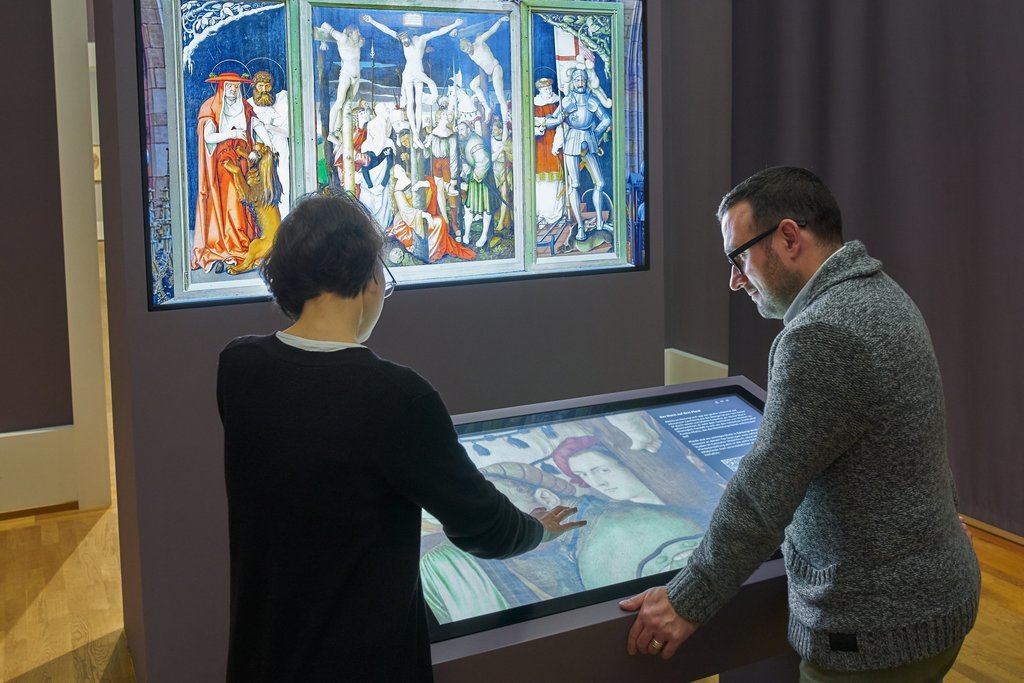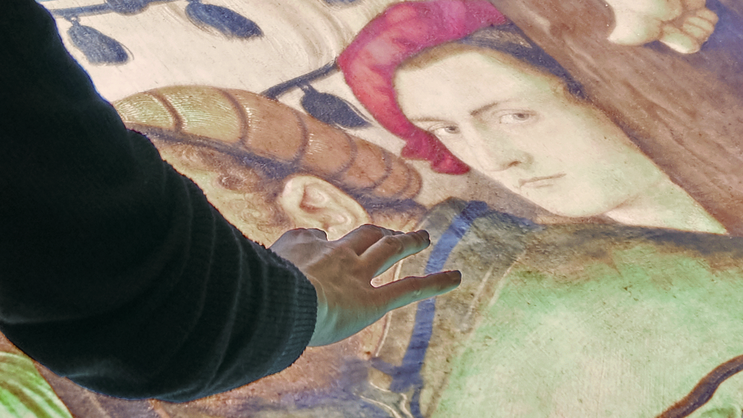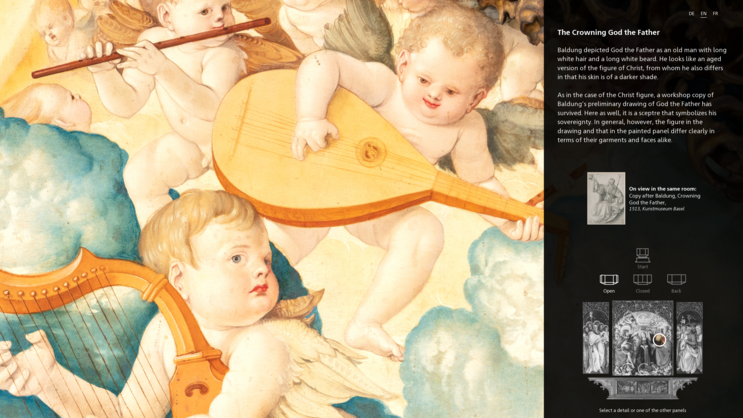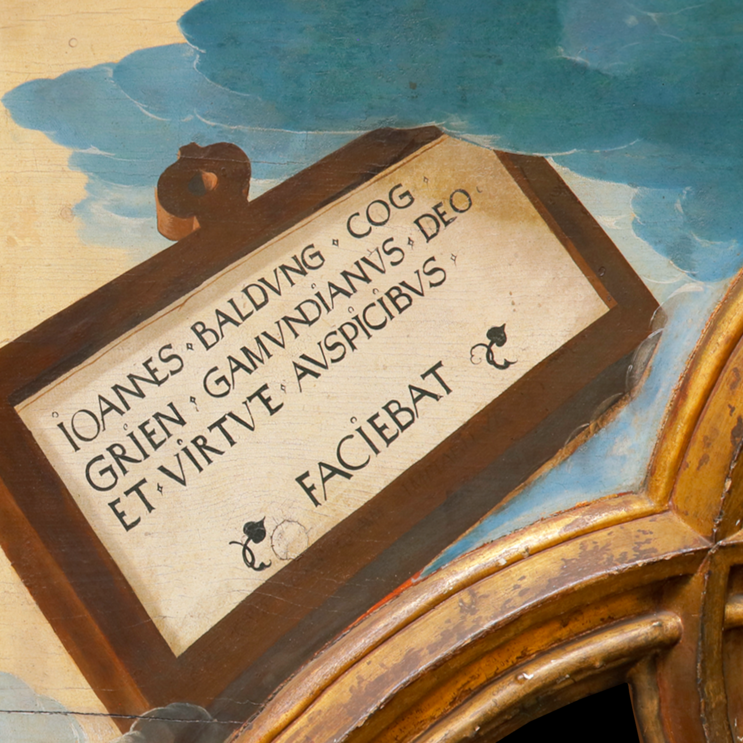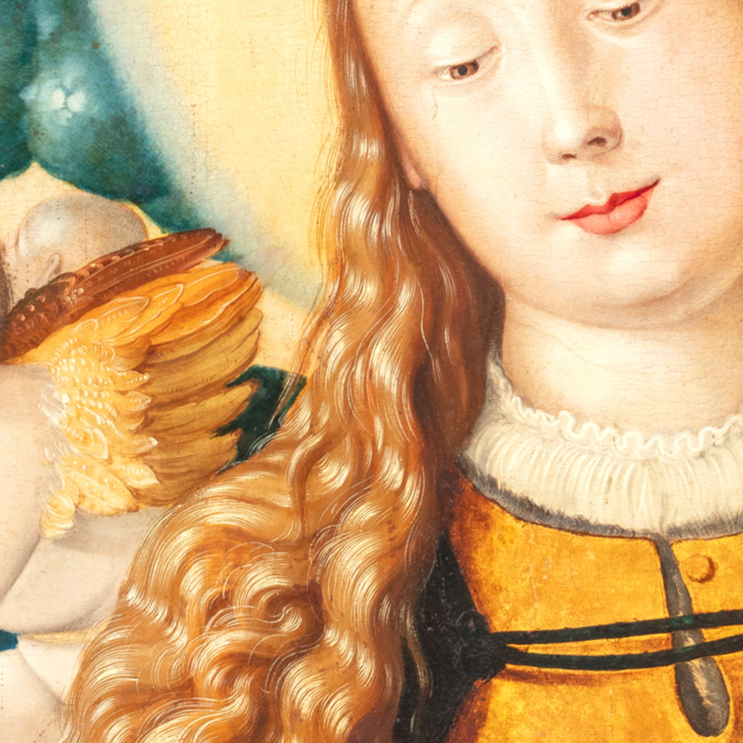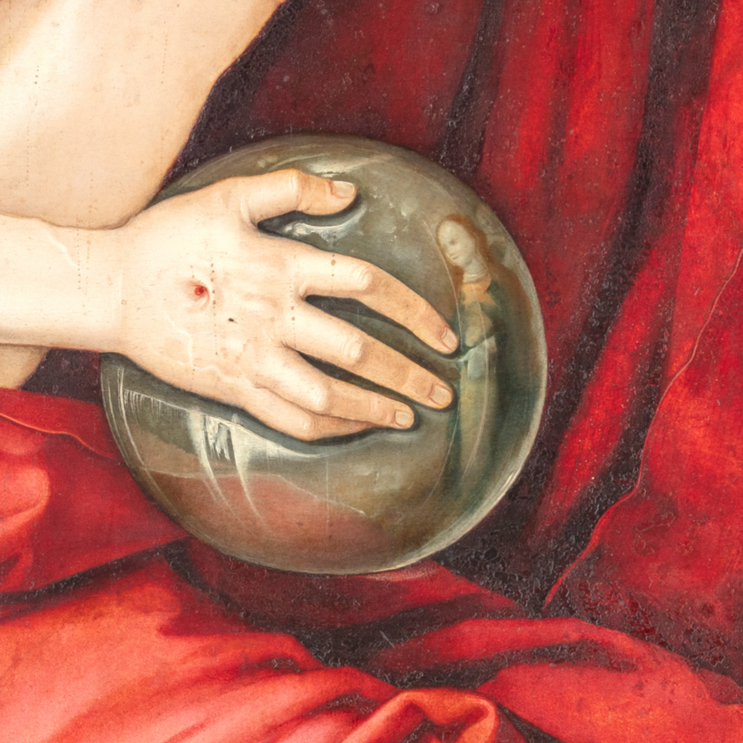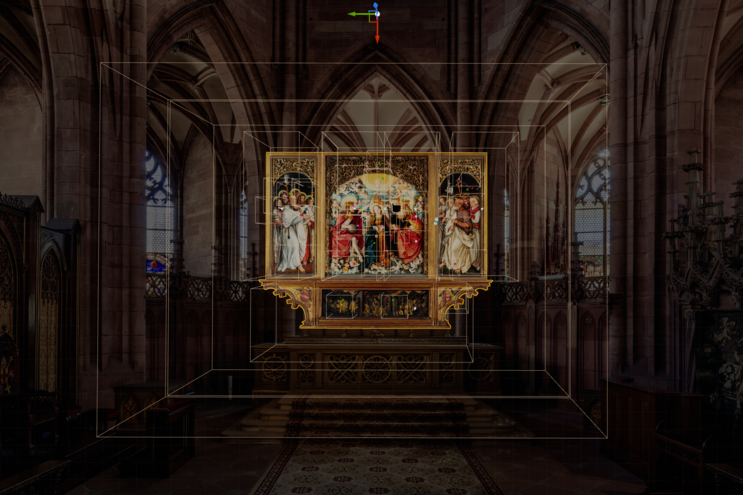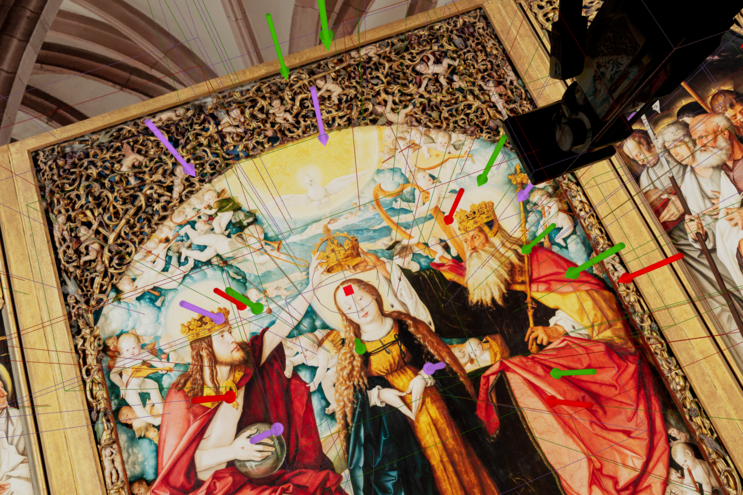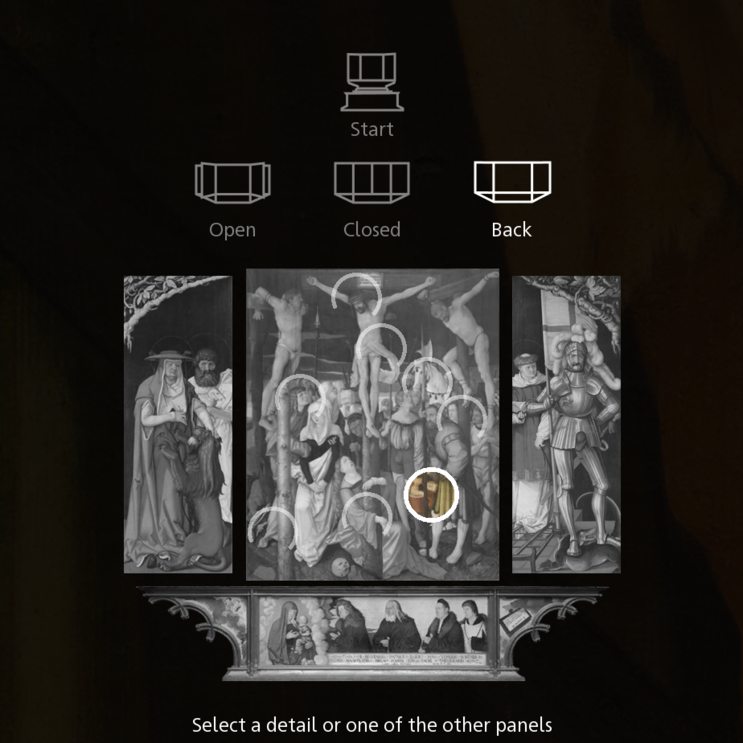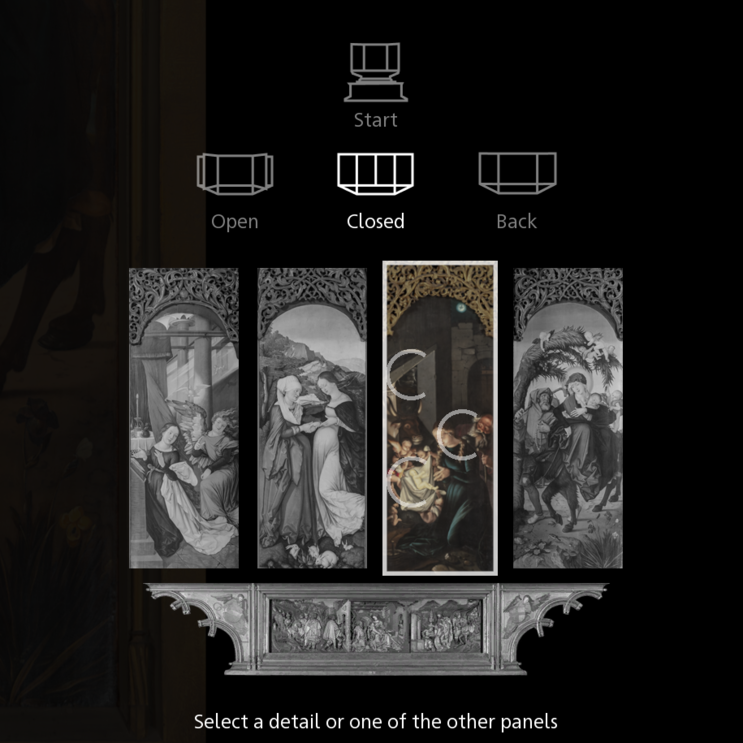Foto: Bruno Kelzer | kelzer.de
Among the most famous works of Renaissance painter Hans Baldung Grien is a monumental high altar located in Freiburg Münster. For the solo show “Hans Baldung Grien. sacred | profane” we developed an exhibit digitally bringing the large-scale piece to Kunsthalle Karlsruhe – interactive, in great detail and in line with the scenography by bachdolder.
Zoom on art history
Freiburg’s Altar within Grasp
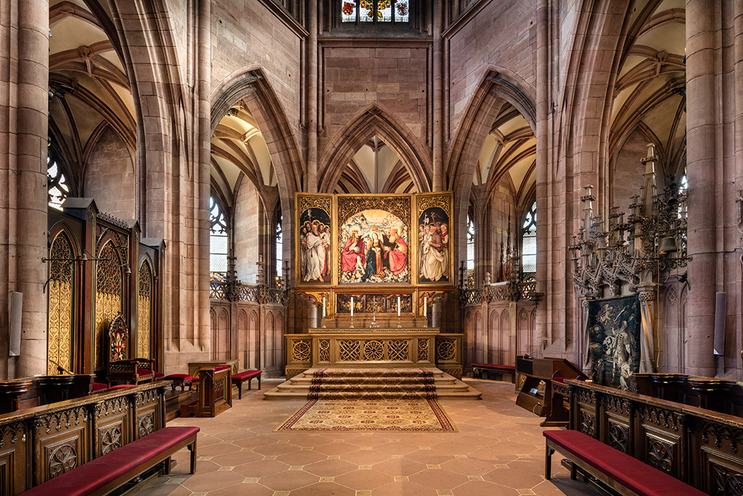
Hans Baldung Grien, who was trained by Albrecht Dürer, is one of the most prominent artists of the German Renaissance. Between 1512 and 1516, he created an impressive piece of art: the high altar of the Freiburg Münster with a height of almost three metres and eleven individual panels. The altar depicts biblical scenes like the Nativity, the flight to Egypt or the Crucifixion captured in rich colours.
To the wider public, Hans Baldung’s highly detailed artwork is not easy to grasp – due to its dimensions, the distance that needs to be kept and the fact that it is only opened to present the inner panels during Christmas and Lent.
Our task was not only to digitally bring the high altar to Kunsthalle Karlsruhe, but above all enable new perspectives, ways of exploration and layers of background information. We could draw on our custom-developed soft- and hardware solution which had already proven to deliver impressive for Klassik Stiftung Weimar.
In collaboration with the curators, Erzbischöflichen Ordinariat Freiburg and photographer Bruno Kelzer, ultra high-definition footage of the original Altar was produced which served as our raw material.
Overview and Detail
Exploring by touch
Rather than magnifying predefined elements, we let visitors explore the altar independently, guided by their individual interests. Simple and intuitive handling, visual orientation and references to the original piece make sure we meet a broad target group – from art history experts to children.
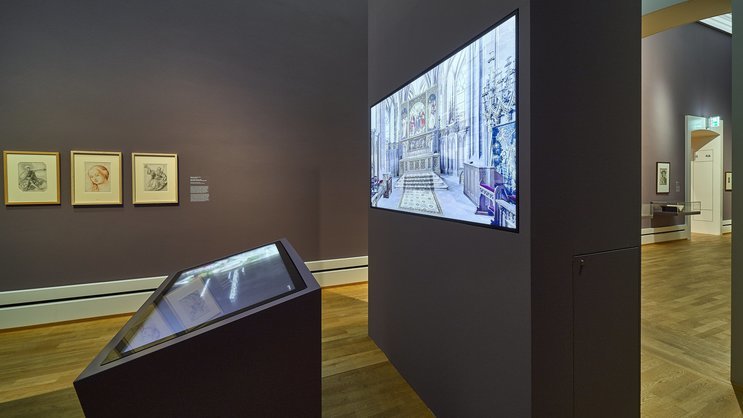
Two screens make up the terminal for diving into Hans Baldung’s altar. The tilted touchscreen embedded into a subtle desk serves for navigation, detailed views and further information; the large, wall-mounted screen displays an overview and draws the connection to the original piece.
The exhibit is placed prominently within the exhibition space and blends into the overall scenography by bachdolder.
A clear and intuitive navigation lets visitors dive deeper and deeper into the piece – from a total view to the individual panel to details and ultra close-ups. They can either use the illustrated menu or swipe, zoom and move about the altar freely by touch.
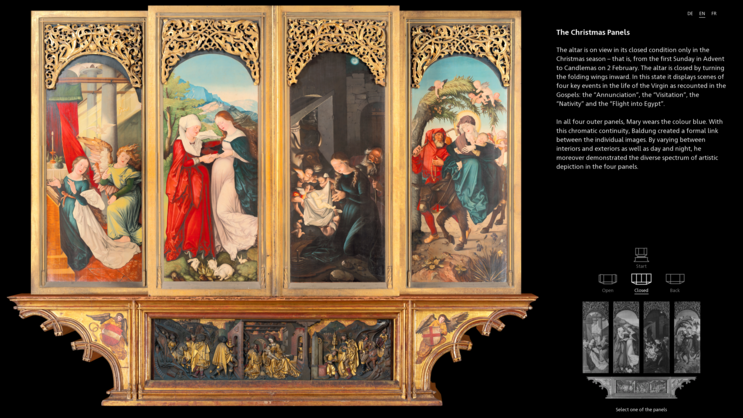
Depending on the section selected, the imagery is accompanied by corresponding text and references to other artworks presented in the exhibition, like drawings and sketches or paintings on related topics.
The digital high altar turned out as an important part of our exhibition. One of Baldung’s major works which we were not able to show as the original is made digitally accessible in an exciting way. The visitors are thrilled by the possibility to explore all panels of the altar in greatest detail.
The exhibit allows to inspect Hans Baldung’s complex composition with all its hidden motifs and messages in unprecedented detail. His painting technique, the application of colour and style of brushstrokes, also becomes visible in the ultra close-up view.
The application is integrated into a clear spatial concept putting the art experience center stage. With simple means, we created an exhibit adding a new dimension to the exhibition and making Hans Baldung’s high altar tangible in all its detail for the first time ever.
The digital eye
Imagery in virtual space
The application is integrated into a clear spatial concept putting the art experience center stage. With simple means, we created an exhibit adding a new dimension to the exhibition and making Hans Baldung’s high altar tangible in all its detail for the first time ever.
The ultra high-resolution photographs specially produced for this purpose in Freiburg served as our starting point. By integrated them into a 3D environment and mapping them on a digital representation of the altar’s panels, we gained maximum creative flexibility. Within the render engine, we were able to define sections, perspectives and details using digital cameras and connect text and images to selected motifs.
In the next step, we integrated the images and additional material into an application solution with custom features.
With a coherent information architecture and self-explanatory, visual navigation principles, the exhibit becomes accessible and fun to use for all visitor groups.
Our work for Kunsthalle Karlsruhe and Klassik Stiftung Weimar are just two examples of how this solution can be used to bridge distances and dimensions and bring remote artefacts to any place.
With a versatile infrastructure at hand and a deep understanding of creating interactive educational journeys, we are able to develop applications for similar scenarios efficiently and tailor them to the idividual requirements.
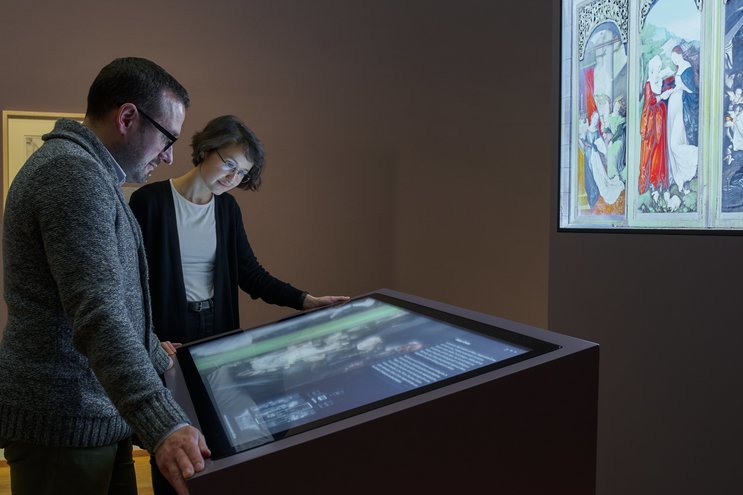
Foto: Bruno Kelzer | kelzer.de
© Staatliche Kunsthalle Karlsruhe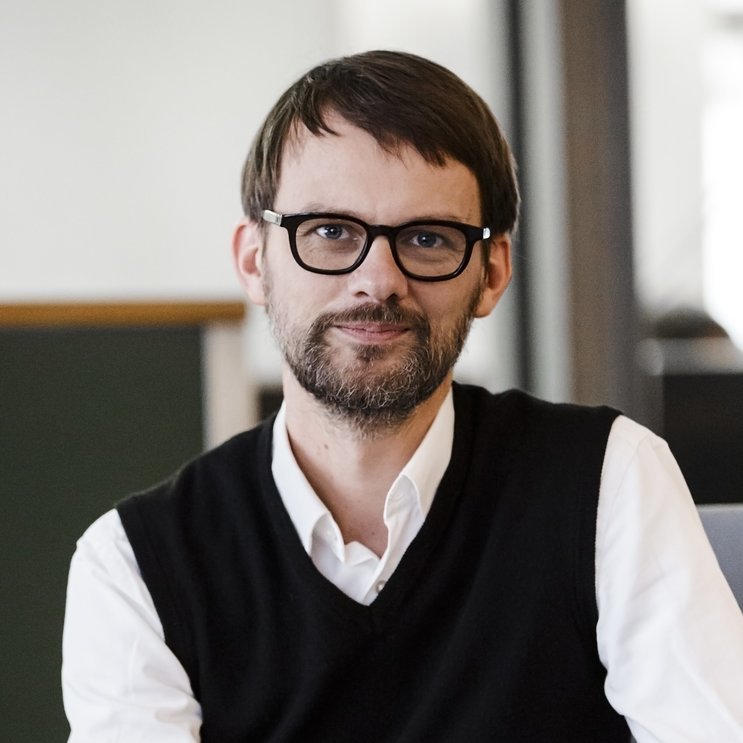
Curious about our approach? Feel free to get in touch!
Sebastian Oschatz Partner +49 69 24 000 321 sebastian.oschatz@meso.design sebastian.oschatz@meso.design +49 69 24 000 321
MESO Digital Interiors GmbH
Gutleutstr. 96 . 60329 Frankfurt . Germany
Team
Klaus Texter, Anna Rack, Henje Richter, Nikos Mechanezidis, Constantin Urban
